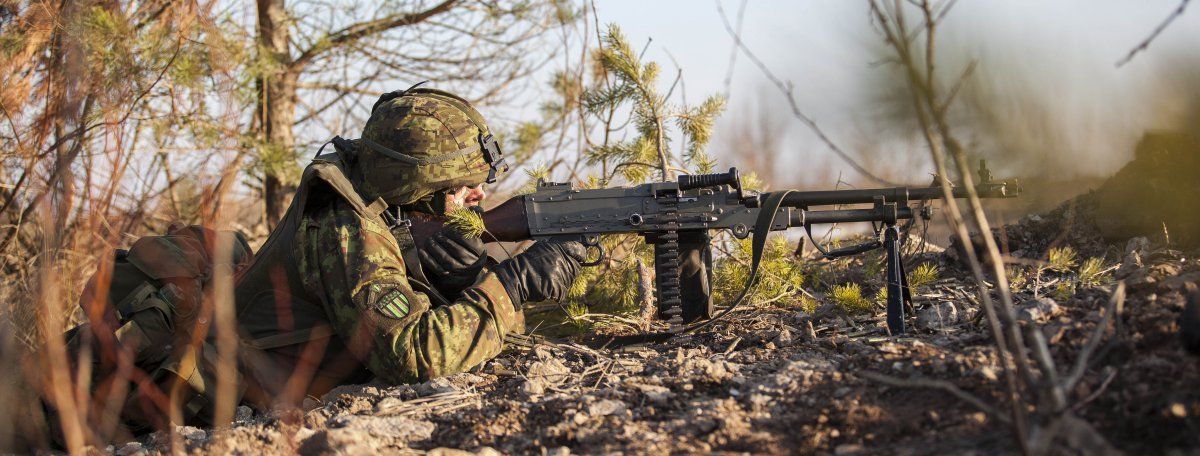Estonian Defense League: Standing Against Russian Aggression Despite the Odds

Tiny Estonia has only one potential path to war but it is a terrifying one:
Estonia, a NATO member with a population of 1.3 million people and a standing army of about 6,000, would not stand a chance in a conventional war with Russia. But two armies fighting on an open field is not Estonia’s plan, and was not even before Donald J. Trump, the Republican presidential candidate, said European members of NATO should not count on American support unless they pay more alliance costs.
Since the Ukraine war, Estonia has stepped up training for members of the Estonian Defense League, teaching them how to become insurgents, right down to the making of improvised explosive devices, or I.E.D.s, the weapons that plagued the American military in Iraq and Afghanistan. Another response to tensions with Russia is the expansion of a program encouraging Estonians to keep firearms in their homes.
Perhaps it isn’t widely known but Estonia waged an irregular war in self-defense against Russia, the Soviet Union to be precise, before. During WWII Estonians fled the Soviet invaders, and the threat of deportation (or worse), by hiding in Estonia’s substantial wilderness. These “Forest Brothers” weren’t capable of driving the Soviets out but they did make life difficult for them at times:
The Soviet forces that either were stationed in or had retreated to Estonia, as well as the local “red” activists, went through a very intense period of combat from 4–12 July 1941, due to the various resistance operations conducted by the Forest Brothers. During this period, as panicked Communist activists and refugees fled before the oncoming German forces, Pärnu, Valga, Võru, Sakala, and Tartumaa counties came under the Forest Brothers’ partial or complete control, even before the advancing German forces reached these areas. North of the Pärnu–Emajõe line, numerous small and large battles took place between the Forest Brothers and various Soviet military units. In the middle of July 1941, an operational pause descended on the war in Estonia, a pause that changed the character of the Summer War. An increase in the number of Soviet units fighting against them, as well as more efficient counterinsurgency operations, temporarily stalled the Forest Brothers’ hitherto extremely active armed resistance. The Forest Brothers in the northern parts of Sakala and Tartumaa counties, located in the Soviet close rear, suffered heavy losses, caused mostly by NKVD operational units and so-called destruction battalions, and Red Army battalions that had been withdrawn from Latvia and southern Estonia.
Once the Soviet units had recovered from their retreat and the initial confusion caused by the Forest Brothers’ attacks, the new commander of the Eighth Army and the newly appointed rear guard commander were able to reestablish command and control over their units. At the same time, the Red Baltic Fleet established contact with the Eighth Army. Subsequently, most Soviet forces in Estonia managed to establish communications and improve cooperation and attempted to seize the initiative in their counterinsurgency operations. The rear guard forces were directed to support the missions assigned to the Army units. In addition, agent networks were established with the purpose of gathering information about the locations of the Forest Brothers’ units, and plans to search and locate insurgents in specific areas were put into action. The number of patrols and guard posts was increased to protect vital communication assets, while border guard detachments, railroad security units, operational units, and the destruction battalions, all under the command of the NKVD, assumed concrete areas of responsibility.
It is now more difficult to hide from a large adversary, thanks to modern technology, than it was in the 1940s but Estonia has few options. In reality they have only NATO and America’s willingness to stand against, and prevent, Russian aggression. That is a sobering thought given the inconsistent commitment to European defense and the understanding of the Russian threat that we have seen in this election. It is not inconceivable that Estonians will have to flee to the forests once again.
